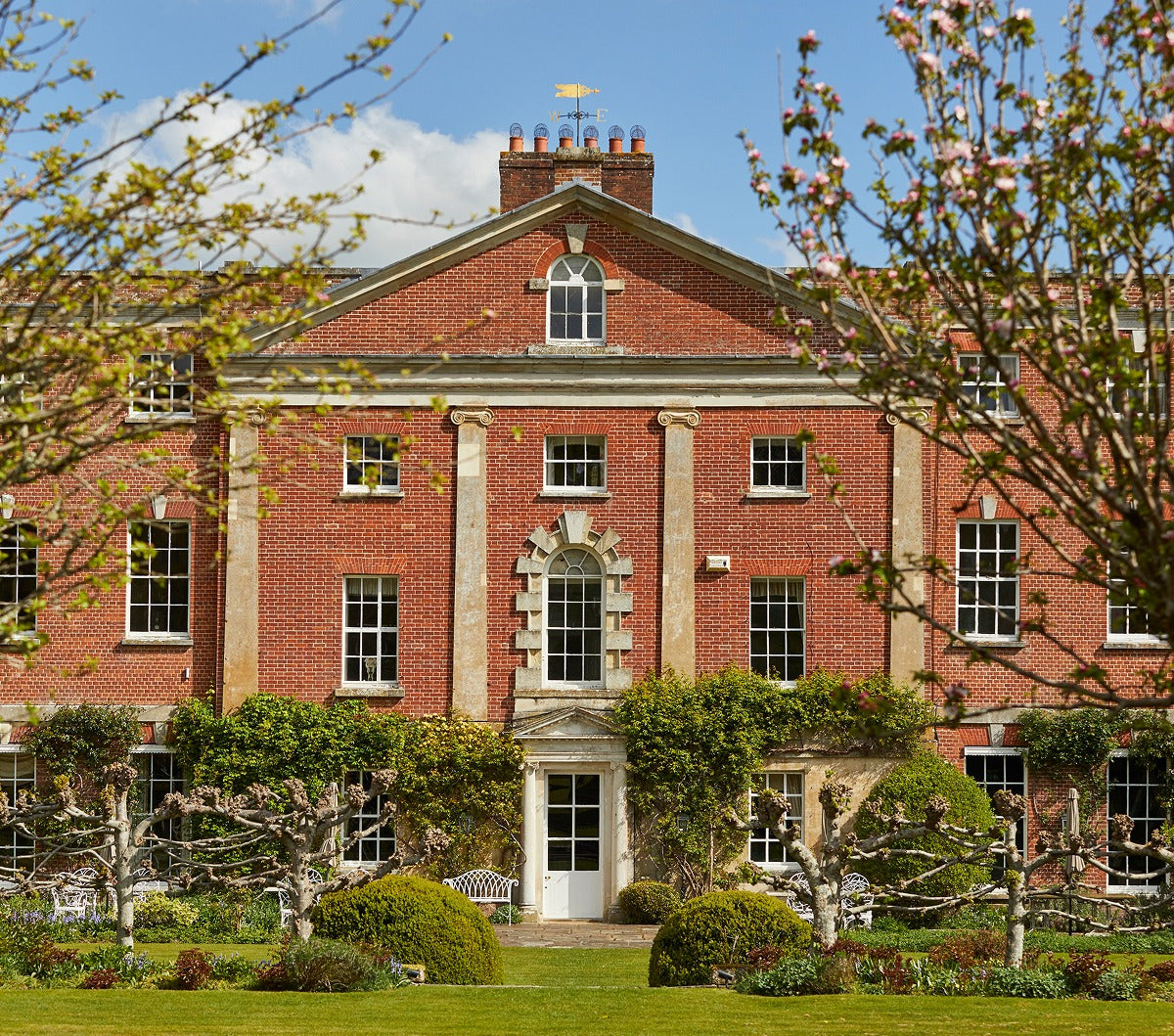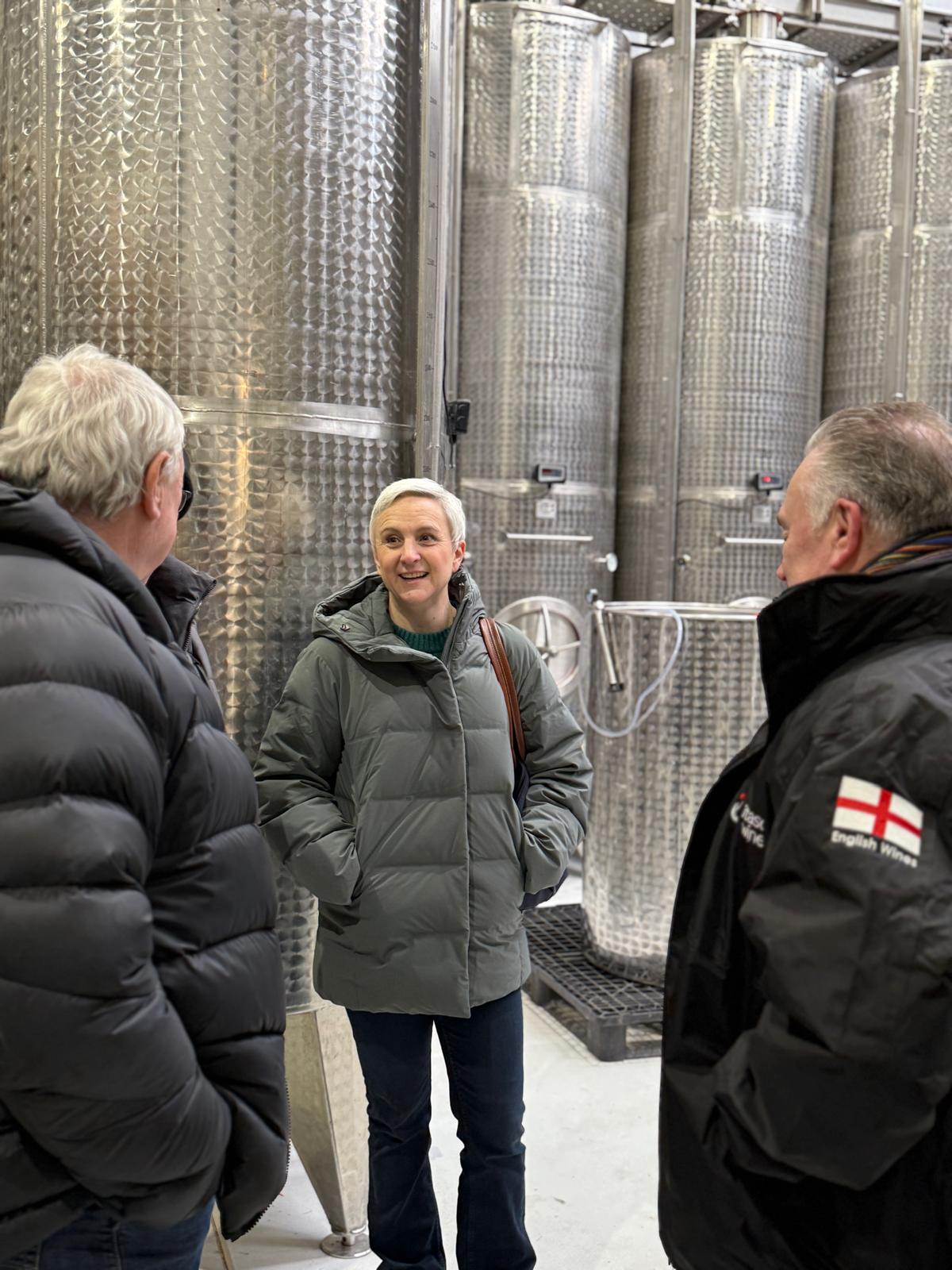Did you know the glorious corner of Hampshire we call home is open for tours? You can explore our idyllic 12-acre vineyard, brush up on your knowledge of the art and craft of winemaking in our state-of-the-art winery and then – the best bit, obviously – you can sample the goods with an in-depth wine tasting.
When you come for the tour, you’ll be in the excellent hands of our brilliant Tour Guide, Izzy. She knows, well, everything pretty much. To give you a taster of the breadth and depth of her knowledge, we asked her a few questions to test her out!
Take it away, Izzy…
What’s the history of the vineyard?
Lower Swanthorpe field was previously farmed for arable crops, and continues to be planted with cover crops in between vine rows to provide biodiversity. It was selected for vineyard planting as it’s south facing with a gentle elevation – ideal for maximising sunshine and warmth. It is also on clay and chalk, the perfect combination for growing grapes, as clay is water retentive whilst chalk is free draining.
What’s the process from vineyard to bottle?
First, the grapes are picked by hand at optimum ripeness. Harvesting is done by hand to preserve intact bunches of grapes – protecting the freshness, acidity and purity of the fruit flavours. Once picked, the grapes are transported to the winery for sorting – then crushed using state of the art presses to produce a clean, delicate juice.
How long does wine ferment before being bottled?
Fermentation is the step in the winemaking process in which the sugars in the grapes are converted into alcohol and CO2. The length of time it takes to ferment grapes varies, taking anywhere from 10 days to a month or more.
The ageing process can also vary in length depending on the style of wine in question. Typically, fresh, fruity white wines – such as the Bacchus – will not be aged in order to preserve aromatics and a clean mouthfeel. Conversely, Pinot Blanc will be aged in order for the wine to gain texture and richer flavours. The goal for most winemakers is to develop a well-balanced bottle of wine that’s been aged for the appropriate amount of time.
The final step in the winemaking process is bottling, in which the wine is either bottled and immediately enjoyed or left to age even longer within the bottle.
What does fermentation take place in?
We use both stainless-steel tanks and third-use burgundy oak barrels.
Stainless steel is completely neutral in the winemaking process. Unlike oak barrels, these containers do not impart any characteristics into the wine. This makes them useful not only for fermentation, but also as holding tanks.
Fermenting a wine in small oak barrels can noticeably affect the wine’s flavour and texture. This is especially true of white wines. After a white wine has been barrel fermented it will often be described as creamy, round, buttery and toasty.
What food pairs best with Penn Croft Wine?
Bacchus: Anything salty goes perfectly with Bacchus as it increases the perception of fruit, so dishes with samphire, or fish and chips are ideal. The vinegar on those chips also helps as would a spring vegetable salad with a vinaigrette dressing.
Pinot Blanc: Best suited to foods with more subtle flavouring. It will match up well with soft cheeses, salads with cream dressings and flaky fish.
What makes a good English wine and how do you spot them?
The first thing you want to check for is the intensity of the flavours in the wine. Good wines should have great concentration of flavour, even with just one first sip. The flavours are discernible, and they linger in your mouth.
What makes Penn Croft vineyard unique?
Our vineyard is all about regenerative farming and sustainability – and our winery had to have minimal impact on the environment too. We’ve got solar panels on the roof, low energy LED lighting throughout, thermo controlled tanks and we naturally recycle our wastewater through the surrounding wetlands. Not to mention we have a great team that are very knowledgeable and passionate about making wine!
Can you tell us more about sustainability at Penn Croft?
Penn Croft Farms have spent twenty years nurturing the soil. Simon Porter, Owner of Penn Croft Farm and Co-Founder of Penn Croft Vineyards, is an ardent advocate of regenerative agriculture – assisting nature to manage the environment, rather than seeking to fight and control it.
To build on this natural advantage, Simon uses regenerative farming, which aims to build carbon storage in the soil – something that’s vital to our ecosystem. Simon’s methods focus on three core principles: minimal soil disturbance; natural cover for the soil; and the use of biodiverse planting wherever possible.
What method is used to grow the grapes?
The Scott Henry System is designed to improve grape yields and quality in a high-capacity, cool climate site. The basic strategy of Scott Henry training is vertical canopy division with shoots being rained upward and downward. All the above helps us reduce chemical use in the vineyard. The grass around the outside is deliberately left long for insects to colonise.
What cover crops do you grow in between the vines and why?
In between the vines we grow cover crops – mustard, radishes, clover, Phacelia to name but a few. These are planted to improve soil fertility and are then used as mulch around the base of the vines.
So there you go: Izzy, a veritable walking encyclopaedia of all things Penn Croft.
Why don’t you come along and experience a tour first-hand – and if you have any questions, you know who to ask!


